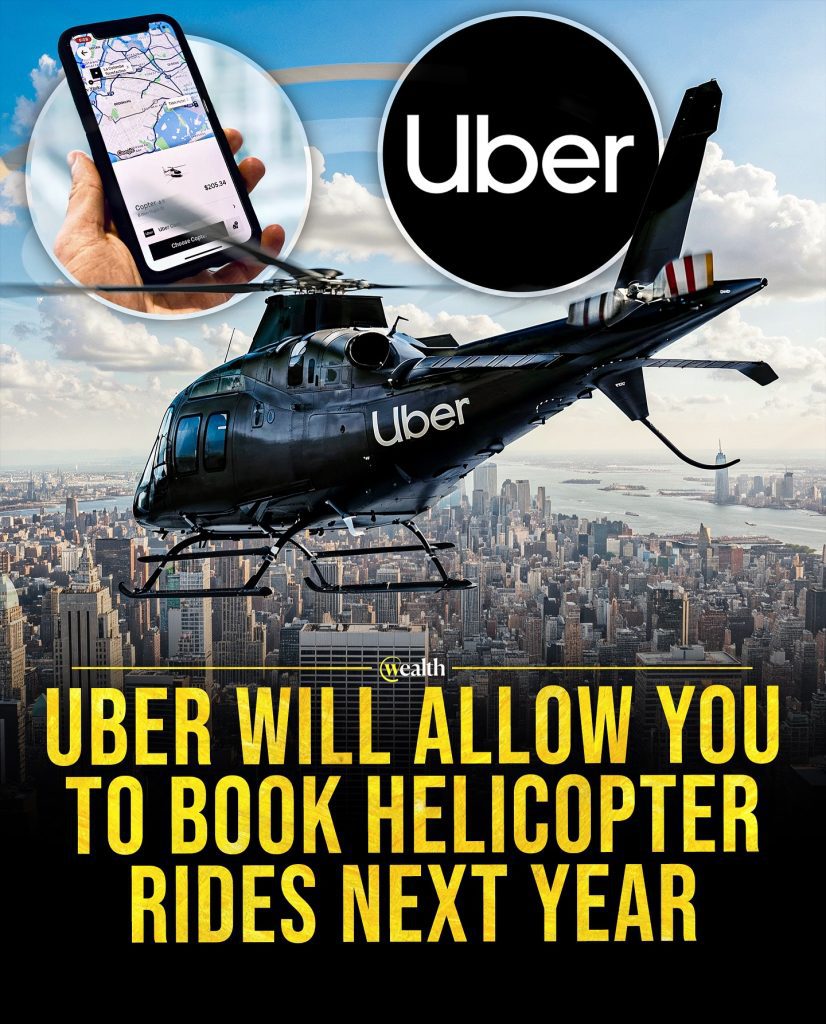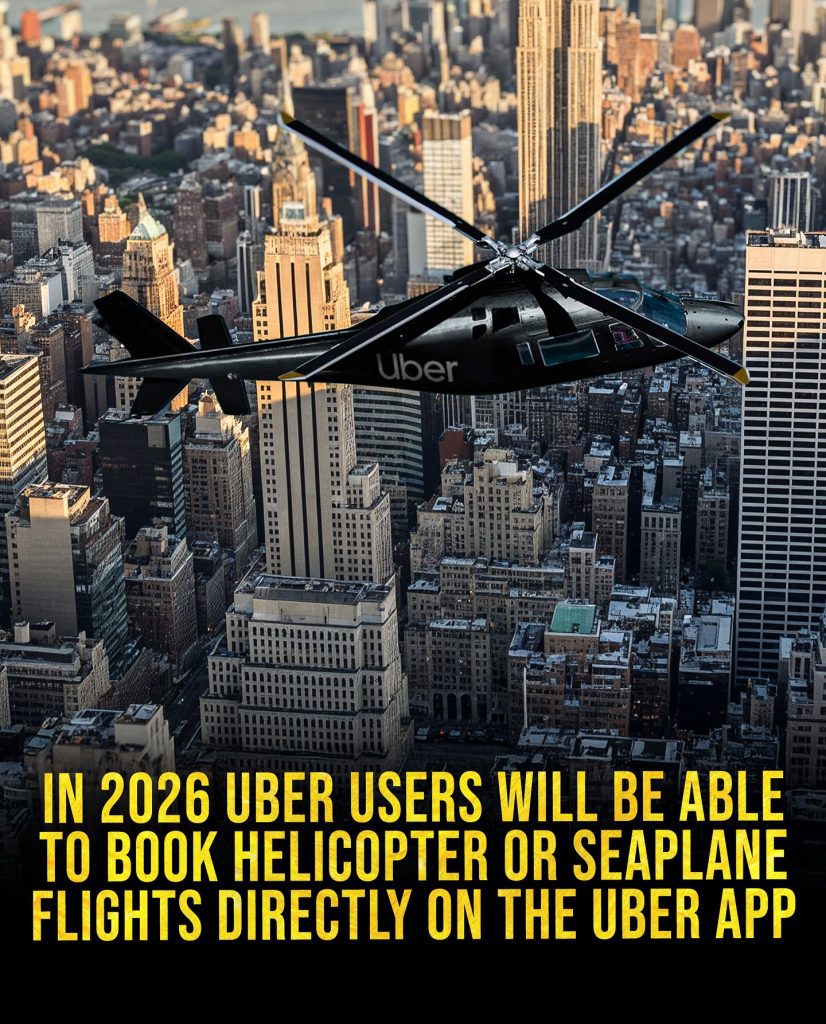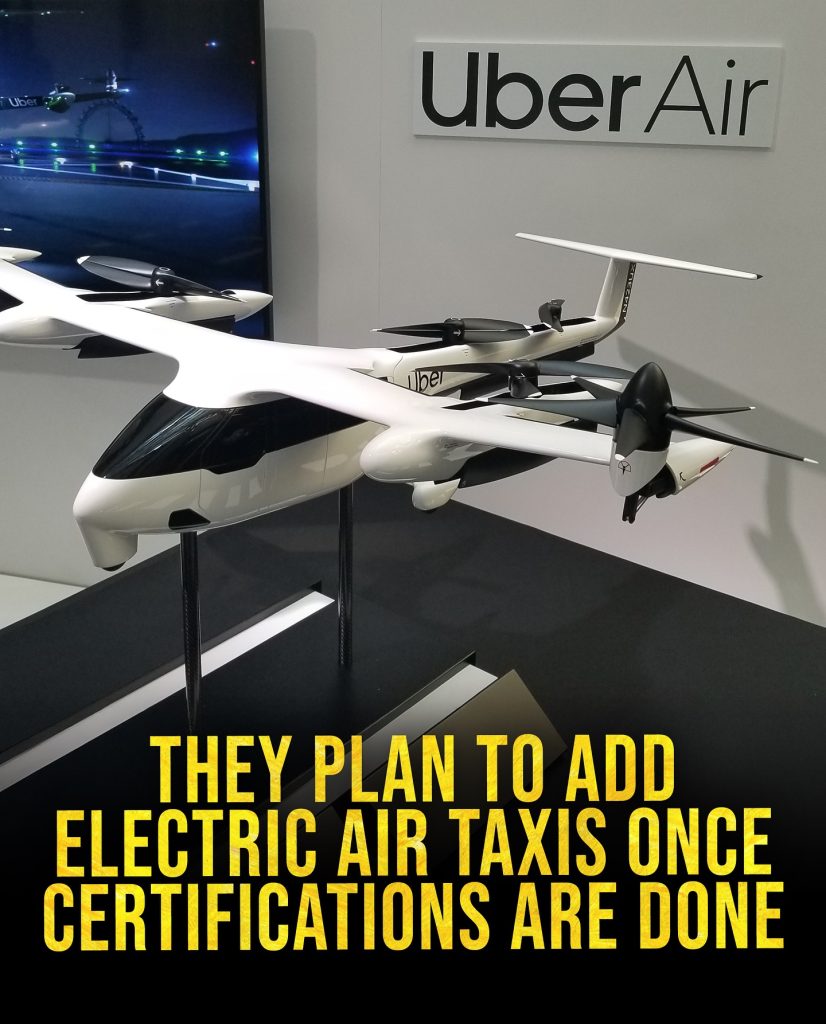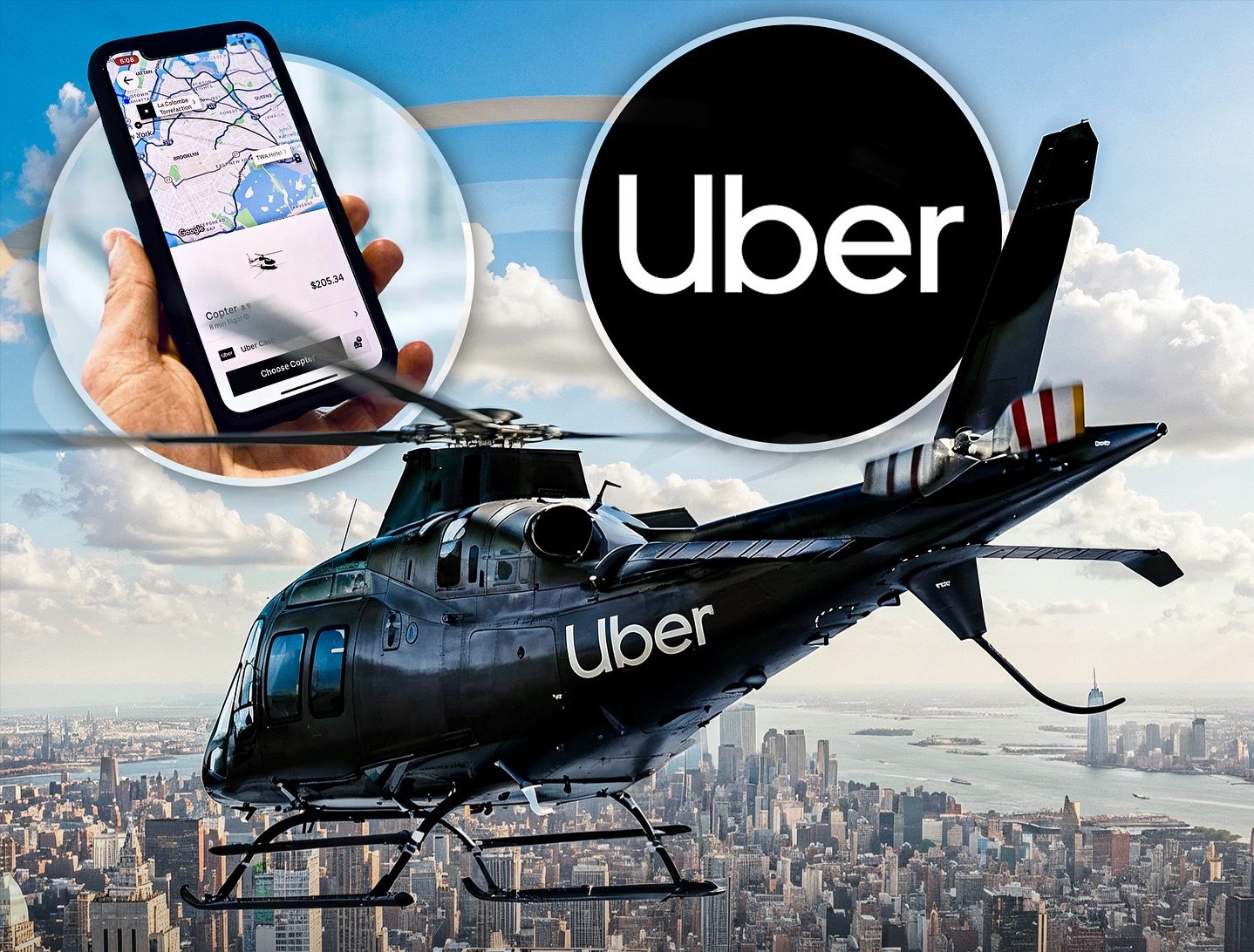Uber Will Allow You to Book Helicopter, Seaplane, and Even Electric Air Taxi Rides Through Its App
Uber is putting the sky in your app 🚁
Uber has already transformed how we think about getting from one place to another. What once started as a simple way to call a car with your phone has now evolved into food delivery, package services, and even luxury ride options. But the company isn’t stopping there. Uber, alongside its partner Joby Aviation, is planning to make helicopters, seaplanes, and even electric air taxis available to book directly inside the Uber app. The idea sounds futuristic, almost like something from a sci-fi film, but it’s closer than most people realize. As early as 2026, Uber users could be booking flights over traffic instead of sitting in it.
This plan follows Joby Aviation’s purchase of Blade’s passenger business. Blade already operates helicopter and seaplane routes that move about 50,000 people a year, particularly between Manhattan and JFK Airport. These routes are popular among those who value time over cost, since flying shaves hours off what can be a painful traffic-filled journey. By integrating these services into the Uber app, the company is aiming to bring convenience to a market that already exists but hasn’t yet been made mainstream. And just like Uber once made black cars accessible through a tap, it now wants to do the same for the skies.
Uber Will Allow You to Book Helicopter Rides Next Year

The first step in this aerial expansion is helicopter rides. Uber has already been experimenting with helicopter services in New York City for years through Blade, allowing passengers to fly from Manhattan to JFK in minutes. Now, with Joby’s deeper involvement, the feature is being folded more seamlessly into the Uber app. Instead of going to a separate company, users will simply open the Uber app and see helicopter or seaplane options alongside car and UberX rides.
This might sound like a luxury reserved for the wealthy, but Uber has shown in the past how quickly prices can drop when more people start using a service. Just as UberBLACK eventually gave way to cheaper UberX rides, it’s possible that helicopter flights, while expensive at first, will become increasingly accessible as the service grows. For now, prices are likely to remain high, but the experience of avoiding traffic altogether and flying over the city is something many will consider worth it.
In 2026 Uber Users Will Be Able to Book Helicopter or Seaplane Flights Directly on the Uber App

The year 2026 is shaping up to be when this idea really takes off. Not only will helicopters continue to expand through Blade’s existing network, but seaplanes will also be part of the equation. Imagine booking a ride to a coastal destination not by car but by a small plane that takes off and lands on water. That kind of convenience could change weekend travel and business trips forever.
Uber’s integration will make this process seamless. Instead of dealing with separate websites, phone calls, or third-party services, the Uber app will centralize everything. A few taps could allow someone to request a seaplane from a marina or a helicopter from a rooftop pad, just as easily as they request a car from the curb. The company is betting that convenience will win people over, even if the price tag still puts it out of reach for everyday use at first.
But the bigger picture here is about future-proofing. By building the infrastructure now—working with cities, airports, and aviation companies—Uber is laying the foundation for something even bigger: the arrival of electric air taxis.
They Plan to Add Electric Air Taxis Once Certifications Are Done

Perhaps the most exciting part of this vision is the introduction of fully electric air taxis. Joby Aviation has been working on developing battery-electric vertical takeoff and landing aircraft (known as eVTOLs) for years. These aircraft look like a cross between a helicopter and a small airplane, but they are quieter, more efficient, and powered entirely by electricity. That means they could operate in dense urban areas with less noise pollution and lower operating costs compared to helicopters.
Certification from aviation authorities is the biggest hurdle, but Joby is making progress. The first commercial launch of these air taxis is expected to happen in Dubai in 2026, with plans to expand to major U.S. cities soon after. Once they are approved in the U.S., Uber plans to integrate them directly into the app alongside cars, helicopters, and seaplanes.
The vision is simple but ambitious: imagine opening Uber and having the choice of a car, a helicopter, or an electric air taxi depending on where you’re going and how fast you need to get there. A trip that might take an hour in traffic could take just 10 minutes through the air, all while producing fewer emissions than traditional aircraft.
This transformation represents a natural next step for Uber. The company started by disrupting taxis, then grew into food delivery and freight. Now, by looking upward, Uber is aiming to take its brand of convenience into the skies. Of course, challenges remain. Regulatory approvals, high costs, and public perception are major barriers. Many people will wonder about safety, noise, and affordability. But Uber has always faced skepticism before launching new services, and time and again, it has managed to change habits once thought impossible to break.
When Uber first launched, the idea of getting into a stranger’s car through an app seemed odd, even risky. Today, it’s second nature for millions of people. Similarly, the thought of booking a helicopter or air taxi through an app might seem extravagant now, but it could very well become normal in a decade. That’s the pattern with technology: what feels futuristic today becomes routine tomorrow.
The partnership with Joby Aviation is critical to making this vision real. Joby brings the aircraft expertise and the regulatory progress, while Uber brings the platform, user base, and brand recognition. Together, they could reshape urban mobility in ways cities haven’t seen in decades. For commuters stuck in endless traffic, for business travelers needing to save time, and for anyone who has ever dreamed of flying above the gridlock, this future can’t come soon enough.
So when you hear that Uber is planning helicopters, seaplanes, and electric air taxis, it isn’t just hype. It’s the next evolution of a company that has always aimed higher. And this time, quite literally, it’s aiming for the skies.

